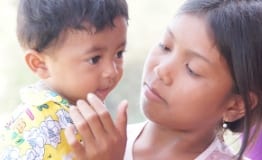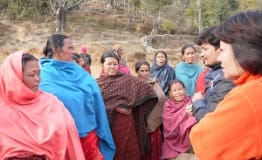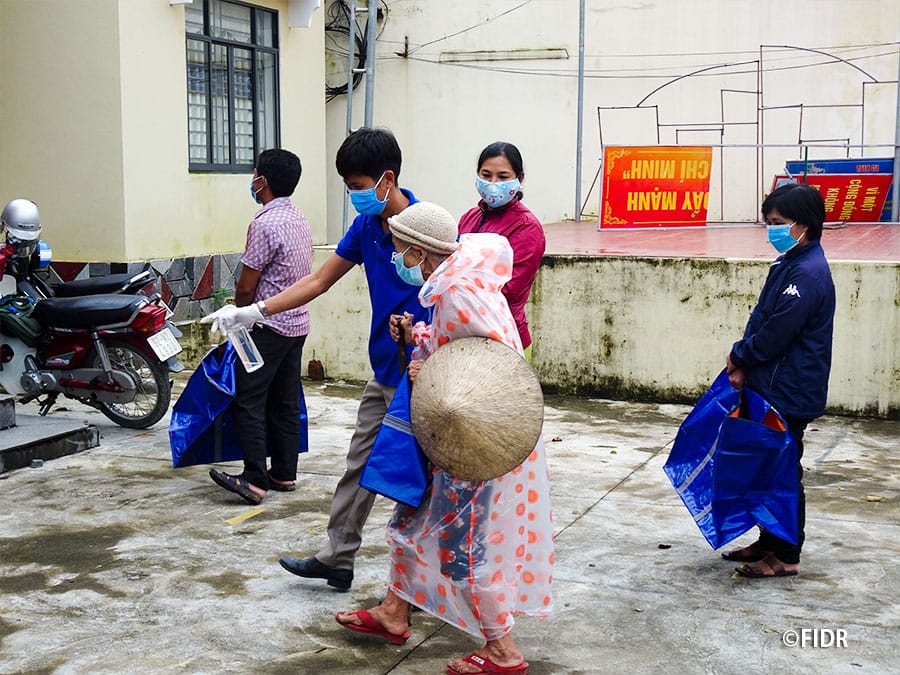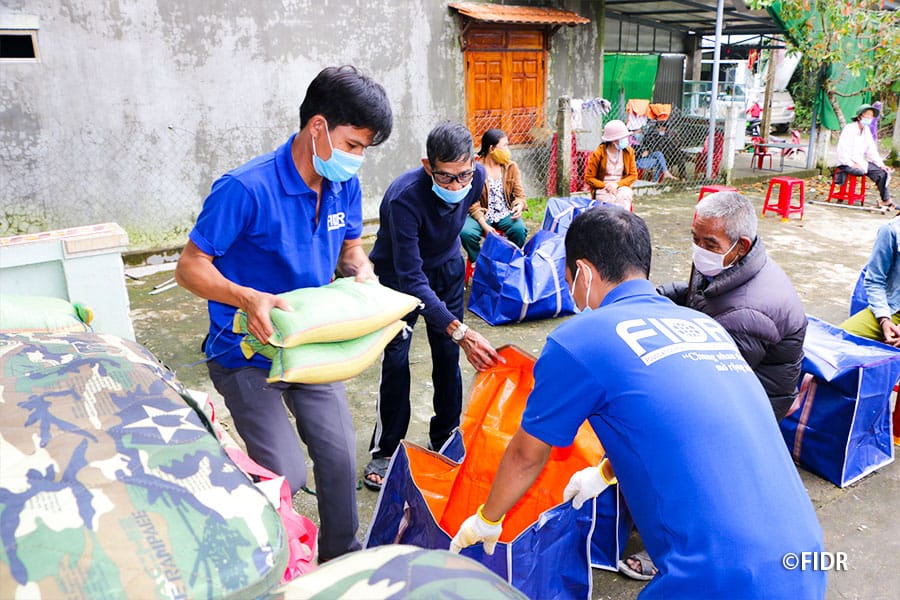2021/02/12
【Report Vol.4】Relief supplies were delivered to 2,800 isolated households in 2 districts of Quang Nam Province

From middle to late January, relief supplies including food and other daily necessities were delivered to 2,800 households in the Phuoc Son and Nam Tra My districts of Quang Nam Province as the second phase of emergency response activity to support typhoon victims.
These two districts were severely damaged by a series of typhoons that hit central Vietnam last year.
The roads in these districts have been cut off, and residents who required urgent assistance were so isolated that even local authorities could not reach out.
Because the beneficiaries of this activity were living in villages within deep mountainous areas, various obstacles were encountered during the delivery. Trucks carrying emergency supplies were broken several times, some roads were cut off that made us take a detour to reach the delivery location, and other challenges.
Nevertheless, Vietnam’s office staff didn’t give up and persevered to solve the problems, as many people were waiting for our support.

A road nearly three months after a major typhoon

FIDR’s vehicle heading to the support area through the site where a large-scale landslide occurred
To ensure that relief supplies were delivered to as many people as possible
In order to ensure that information on the distribution of relief supplies was properly communicated even in a situation where local infrastructure is poor, we not only contacted local authorities at the communal level, but also sent tickets with delivery dates and lists of supplies in advance to the locals themselves.
The tickets were handed to district government officials four or five days before the delivery day. These tickets were then handed to the communes’ officials, and then finally to each villages’ officials. This ensured that all recipients in the distribution list received correct information about the distribution location and time in advance so all of them could come to receive relief supplies.
We asked only one person from one family to come to the venue at a different time so that they could avoid the “Three Cs” (Closed spaces, crowded places, and close-contact settings). Each person was also handed a mask to protect them from Covid - 19.
In addition to sharing information about Covid-19 prevention to residents, we also implemented preventive measures such as setting up separate lines in order to avoid confusion while waiting.

Local people smiling with their distribution tickets

People after receiving their relief supplies.
Paying particular attention to relief supplies
During the delivery planning, we also paid close attention to the relief supplies which should be provided. Because the damage was so serious and widespread, there were many people whose houses was collapsed and had to stay at their relatives’ house. Therefore, in addition to food and daily necessities such as sticky rice and blankets, we also provided pots that could be used not only as cooking utensils but also as tableware.

Relief supplies which were distributed to the residents

Residents coming back home with a bag of relief supplies
Some residents had to walk hours away from their homes to the distribution venue in muddy roads. Residents who received relief supplies expressed their gratitude to us, "Thank you for coming to support us despite the poor rural accessibility here".
The Vietnamese New Year called "Tet", began on February 12.
Tet is the biggest festival in Vietnam and it is a custom for families to get together. Therefore, staff of the FIDR Vietnam office tried their best to distribute relief supplies before Tet started, in order to help people celebrate a warm New Year with their families – even in evacuation shelters.
We hope that the sticky rice and food that we distributed to the victims will help still be able to enjoy Tet despite enduring such an unfortunate disaster.












































